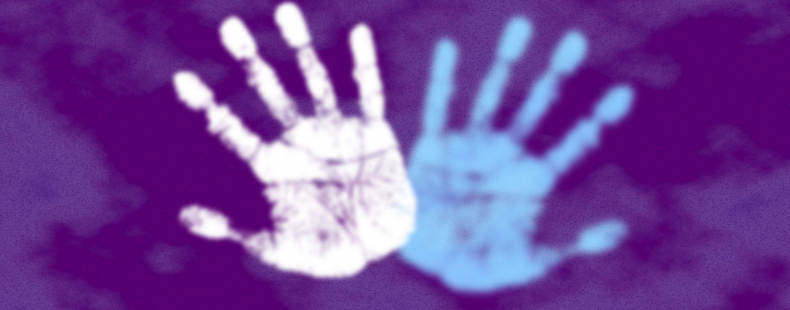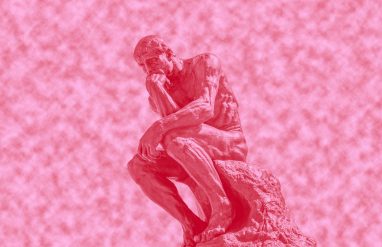Welcome, ye of the living, to the macabre menagerie of spooky spirits and eerie entities. Here you’ll find ghosts, ghouls, goblins, and all manner of supernatural terrors.
What is another word for ghost?
Ghosts are spirits of the dead, often imagined as floating or moving around in a wispy, immaterial form. The word ghost developed from the Old English gast, which means “soul, spirit, life, breath.” A red blood cell having no hemoglobin is also called a ghost.
Ghosts are common in folklore around the world, and there are many different names for them:
- spirit: A general synonym for a ghost, spirit can also be used in terms for ghosts that haunt a specific place or that have a specific characteristic. For example, you can have a forest spirit that haunts the woods or a vengeful spirit that’s out for revenge.
- specter: Sometimes used to refer to an especially scary ghost, the word specter comes from the Latin word spectrum, meaning “appearance.” Specters are spirits that you can see.
- apparition: A supernatural thing that appears suddenly, like a ghost. An apparition may or may not be the spirit of a person. You could see the apparition of a horse, a ship, or an entire battle scene, for example.
- wraith: A wraith is a ghostly version of a living person whose appearance is thought to signal their imminent death.
- phantom, phantasm: A spirit or apparition, a phantom or phantasm is especially prone to appearing and disappearing suddenly.
- revenant: The spirit of a person that has returned after death. In other words, a revenant is another word for a ghost.
- shade, shadow: Both shade and shadow are poetic synonyms for ghost. Shade is sometimes specifically used to refer to spirits of the dead in the underworld as imagined in ancient Greek and Roman mythology.
What is a poltergeist?
A poltergeist is a ghost that makes itself known by making noises, moving things around, or generally causing mischief around the house—and the people—that it haunts.
The word poltergeist was first recorded in the 1840s and comes from the German poltergeist, a combination of the German verb polter(n), meaning “to make noise,” and geist, which means “spirit” or “ghost” and is related to the words ghost, ghastly, and aghast.
Many people are familiar with the word poltergeist due to its use as the title of the popular 1982 horror movie about a house haunted by these noisy spirits. (“They’re heeere.”)
Which of these spooky words would you use to describe your ghastly ghostly encounter?
What is a ghoul, exactly?
In the pantheon of spooky supernatural beings, a ghoul is often specifically defined as a demonic creature that feeds on human flesh, especially that of children or the dead.
The word ghoul comes from the Arabic word ghūl, which was the name used for this terrifying monster of legend. Ghūl comes from the word ġāla, meaning “to seize,” in reference to seizing bodies to eat.
In modern times, the word ghoul is often used more generally. In spooky contexts, it can refer to any sinister creature—ghosts and goblins could both be generally referred to as ghouls.
It can also refer to a person who enjoys disturbing or revolting things. The adjective ghoulish can describe such a person or their behavior.
What are gremlins, goblins, and hobgoblins?
The word gremlin refers to an invisible creature known for wreaking havoc in machinery, especially airplanes. The term is first recorded in the late 1920s, and it may be related to the word goblin, but its origin is unknown. In popular culture, the appearance of gremlins varies widely. The 1984 movie Gremlins famously depicts them as cute, fuzzy animals that [spoiler] turn into hideous, bat-like monsters.
A goblin is a small, ugly creature known for harassing humans. The word goblin comes from the Middle High German word kobold, which refers to a mischievous creature or spirit that haunts houses or mines (the name of the metal cobalt comes from the same word—from the miners’ belief that malicious goblins placed it in the silver ore). In popular culture, goblins are often depicted as tiny, cunning minions of evil or wild and dangerous tricksters.
The word hobgoblin is often used to refer to especially wicked or mischievous goblins. The word hob is another word for a goblin or an elf.
The word hobgoblin can also be used in a general way to be anything that causes fear. The words bugaboo and bugbear can mean the same thing, but bugbear can also refer to a goblin that eats naughty children. Bugbears are sometimes said to appear in the form of a bear, but why bug? The word bug was once used to refer to an evil spirit or hobgoblin. The word is likely related to terms like bugaboo and bogeyman.
What is a bogeyman?
A bogeyman is an imaginary evil creature with supernatural powers that is often said to terrorize or kidnap children. Stories about “the bogeyman” are used to scare children, and its appearance is usually left vague, allowing children’s imagination to conjure up the scariest creature possible.
Bogeyman has many alternate spellings, such as bogyman, boogeyman, and boogieman. It can be pronounced as [ boog-ee-man ], [ boh-gee-man ], or [ boo-gee-man ].
The bogey in bogeyman is an alternative form of the word bogy, which means “hobgoblin” or “evil spirit.”
Which of these monsters from folklore and literature give you the most goosebumps?
Other words for evil spirits and malevolent creatures
Ghosts are spooky but aren’t necessarily always up to no good. For a general term for the kind of ghost that torments or harms the living, use evil spirit.
The word demon can be used to refer to an evil spirit, but it most commonly refers to devils and other hellish creatures. The word fiend can also refer to either evil spirits or demons.
Many cultures and mythologies have produced very specific malevolent creatures. Beware of these especially:
- cacodemon: To the ancient Greeks, an evil demon, or a cacodemon, is the opposite of a good spirit or angel (called a eudemon).
- eidolon: A phantom or apparition. In the Iliad, an eidolon was a shapeshifting spirit that took the appearance of Helen of Troy and, in some versions of the story, may have even caused the Trojan War.
- banshee: In Irish folklore, a spirit in the form of a wailing woman who appears to or is heard by members of a family as a sign that one of them is about to die. Banshees are especially known for their horrifying scream (the “cry of the banshee”).
- dybbuk: In Jewish mythology, a dybukk is a ghost of a dead sinner that seeks to possess a living person. According to the stories, a dybbuk can only be removed through a religious exorcism.
- jinn: In Islamic mythology, a jinn (popularly known as a genie) is a spirit that influences humans to be good or evil. In popular culture, they are often portrayed as super powerful magical creatures who grant wishes (which often turn out much differently than the wisher intended).
- doppelgänger: A ghostly double or counterpart of a living person. The word doppelgänger comes from a German term literally (and spookily) meaning “double-walker.”














